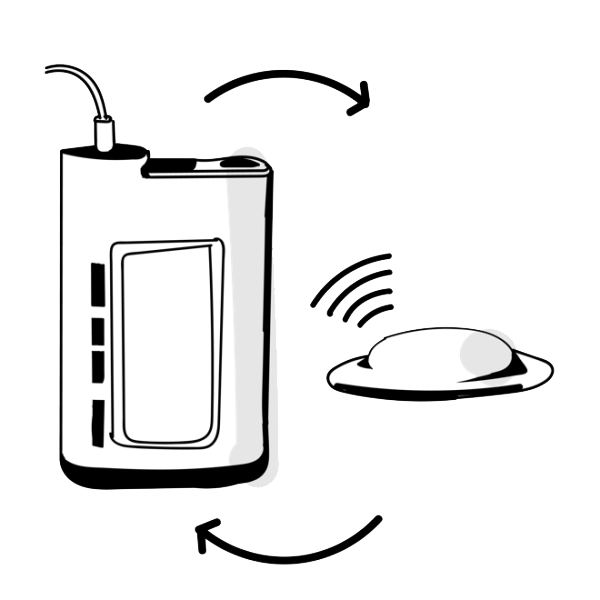Wouldnt it be great to have more in-range numbers and worry a bit less about correcting your blood sugar? You can with an an automated insulin delivery system. Automated insulin delivery systems usually have three parts: a continuous glucose monitor (CGM), an insulin pump, and an algorithm, which is the brain. It makes many dosing decisions for you with less button pushing. The system senses your blood sugar level and adjusts insulin delivery automatically. This means less math and fewer decisions for you! You still have to enter carbs when you eat, but adjustments arent as big of a deal since the system will correct automatically.
Wisdom from others using a Sensor & Smart Pump

When people ask me about my devices, I tell them. They're really cool!
Kristina

As I began to trust the system more, I gave it more and more range to have control managing my diabetes, which has worked really well.
Dan

I Didn't Decide To Get A Pump Until My Doctor Said To Me, "You Are Giving Yourself The Best Care Possible While On Injections. If You Want Your Numbers To Get Better, The Type Of Technology You're Using Has To Change.
Chelsea
Routine
I carry an extra meter and supplies along with insulin and batteries everywhere I go.
Anne, 46
Count and enter carbs into pump at meals.
Pump infusion sets usually last two to three days. Insulin cartridge changes should be done when you are running low on insulin in your pump. The frequency of how often you will change your cartridge depends on how much insulin you use, but most cartridges hold to 200-300 units of insulin.
Costs
I found my control has improved and it has seemed 'easier' to manage my diabetes
Daniel, 42
Insurance
Dealing with insurance is tough, but you can do it! Check out our How To Get It Guide to get the basics straight and understand what youll need to get approved.
Pros
More Time in Range
Spend more time with your blood sugar in range. Sleep better. Prevent lows and highs before they happen.
Think Less
Get back to your life! Let the system do some of the work to keep your blood sugar in range.
Fewer Pricks and Needles
Compared to multiple daily injections, a pump only requires you to insert the infusion set once every two to three days. Compared to a meter, some CGMs only needs one to two finger sticks a day, some don't require finger sticks at all.
Cons
Alerts and Alarms
Some people get overwhelmed with too many alerts from their devices and sometimes it can seem like they are more annoying than helpful. But you can silence or turn many of them off.
Not Perfect
Smart systems are a step toward an "artificial pancreas," but theyre not there yet. You still have to put in work to manage diabetes and there are a lot of parts to keep track of. Some people feel like they dont have enough control or customization with smart systems.




